This is the Part I of a two-part blog – here is Part II.
Despite this, Bristol City Council no longer manages trees growing on many of these sites and their related playing fields. We are not certain, but we imagine that this situation has come about as a result of the decline in local authority control over state educational provision with the rise of independent Academies.
We issued a Freedom of Information request (FoI) to try to find out which sites remain under the control of the Council, but our request has been refused on the grounds that answering it would impose a significant burden on the council. Our more generic request at the end has also been refused on the same grounds.
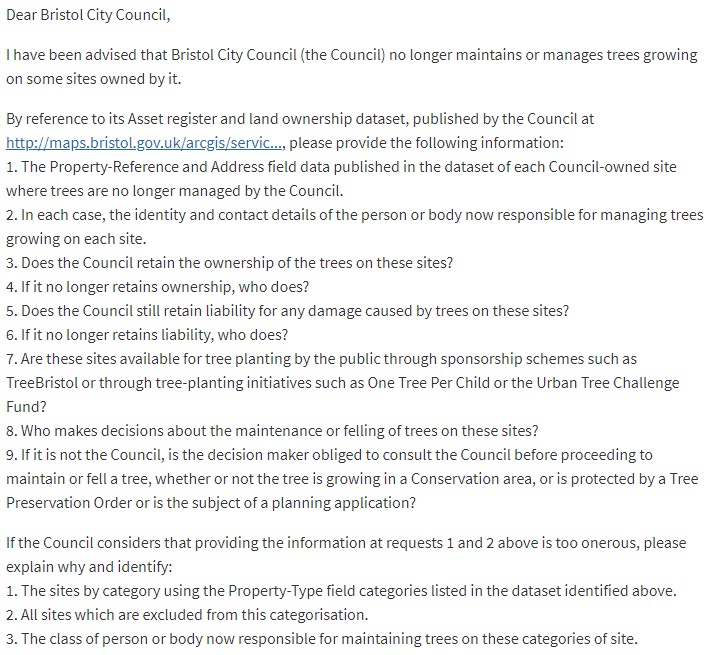
The trees at Stoke Lodge Playing Fields
Recent events at Stoke Lodge and the playing fields there perhaps best illustrate our concerns and the potential threats to the many trees growing on land set aside for educational purposes.
The site was leased for 125 years to Cotham School in August 2011. Interestingly, the Council agreed to retain its responsibility for all the trees growing on the site. It also agreed to indemnify the school for any damage the school might cause to the trees and to insure against this risk.
Stoke Lodge Playing Fields are located to the west of the city in Stoke Bishop ward and cover some 8.7 hectares of open space. Historically they were part of the grade II listed lodge (now an adult learning centre) of the same name which covers about two more hectares and contains an arboretum of important trees (the survivors of a collection that formerly spread right across the historic lodge grounds).
Unlike most of the land around it, this part of Stoke Bishop is not in a Conservation Area. For some 70 years, the whole estate, which until recently had never been seen as a divided space, has been used by the local community and is designated an important open space. Nearly all the trees on the Stoke Lodge estate are subject to Tree Preservation Orders (TPO) which were placed on the trees in early 2012.
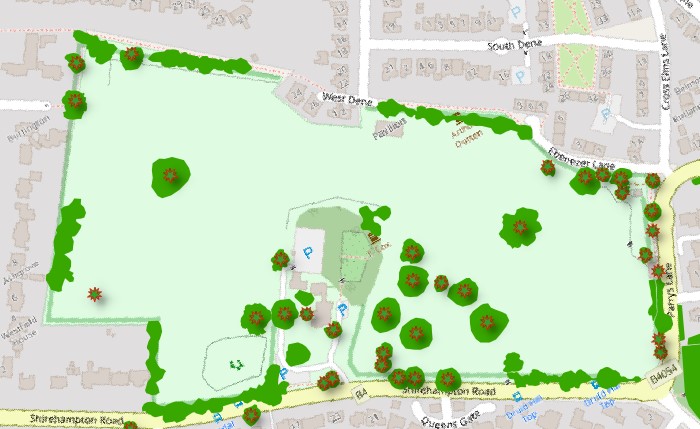
In the summer of 2018 Cotham School announced that it intended to erect a fence along the boundary of its leased land. They stated that they did not require prior planning permission to do so because they were exercising their statutory Permitted Development rights. After an initial dispute about whether the school could indeed use Permitted Development rights, in January 2019 work began to erect the fence.
It was at this point that the Bristol Tree Forum became involved after it became clear that the proposed route of the fence would pass through the root zones of a large number of important trees, many of which were the subject of a TPO.

There then followed a protracted period of back and forth representations while we and the local community fought to get the fence relocated to avoid damaging the trees. This was partly successful. Where it was not, we were able to insist that the methodology for erecting the fence where it still passed through tree roots was modified to minimise damage. Even so, it took the constant vigilance of the local community and BTF representatives to ensure that Cotham School did not ignore the conditions placed upon it.
Setting aside the issue of the siting of the fence, our primary argument has always been that TPO law requires a prior planning application to be made (and approved) before any work is undertaken that could cause damage to TPO trees. Initially, the Council rejected this argument, effectively stating the Permitted Development rights trump primary TPO legislation. It also argued that, anyway, it could not proactively prevent damage to TPO trees, but had to wait until the damage has been done, which is, frankly, absurd. We continued to challenge these interpretations and, eventually, the Council conceded our points, though only after the fencing had been completed.
Things then appeared to return to normal,except that the community was now largely confined the unfenced areas around the boundaries of the site. As a result, the trees around the boundary are being exposed to heavier traffic through their root zones. We are concerned that this may have a long-term, adverse impact on their health.
Then, in August of this year, and without any warning, contractors arrived to lay cable ducting across the site so that video surveillance equipment could be installed. Using a mini digger they immediately set about driving over and cutting through the root zone of a TPO Common Ash growing on the boundary of the site. Other non-TPO trees (some privately owned) were similarly damaged.
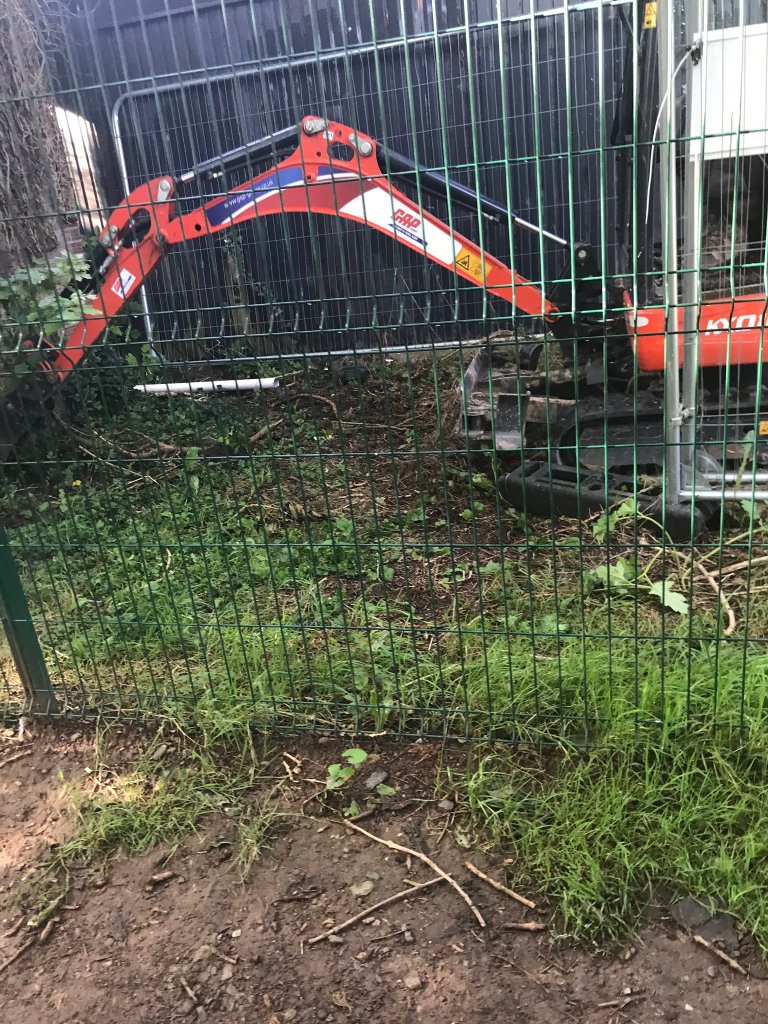
It soon became clear that the contractors had neither been advised of the TPO status of the tree nor of the proper methods to use when working within tree root zones as set out in BS 5837 (Trees in relation to design, demolition and construction – Recommendations), or in the NJUG Guidelines for the Planning, Installation and Maintenance of Utility Apparatus in Proximity to Trees. This was despite the Council being aware of, and engaged with the school’s plans.
We lodged a complaint with the Council’s Planning department. As a result, enforcement proceedings were commenced and the school, whilst narrowly avoiding prosecution, was obliged to take remedial action to try to mitigate the damage caused to the tree. The council also felt obliged to remind the school of its obligations to TPO trees:

And this is a site where the trees are still under the ‘guardianship’ of the Council! What about those sites where the care is vested with the school?
Our concerns remain for the future health of those trees whose root areas had been invaded by the fence installation. We have also continued to express fears about other continuing threats to the trees arising as a result of other activities on the site. So far, our concerns have been ignored.
For example, continuing root compaction and branch damage is being caused to the Persian walnut growing by the gate close to the rear car park and to the trees growing beside the Parrys Lane entrance. This is the result of grass mowers and other service vehicles using these entrances to gain access to the site. We are told the access point has been moved to the Parrys Lane entrance, though that too involves vehicles passing over tree roots.
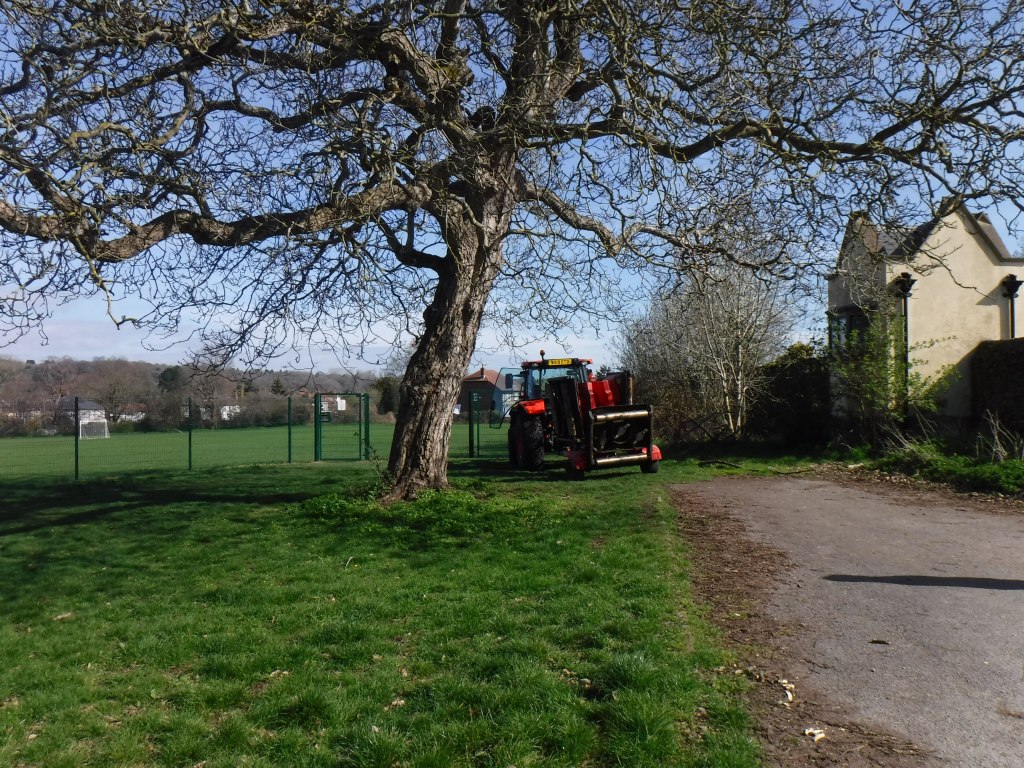
Historically, it looks like vehicles accessed the site from behind the Children’s Play Ground on the southwest of the site, so did not need to drive over any tree roots. The presence of the fence and lack of any gate there has now closed off that option.
The school’s contractors also continue to mow within the root zones of the two large Turkey oaks (BCC-77025 on the eastern end & BCC-77059 on the western end) that grow inside the playing fields fence.

However, the Council and the school decline to address these issues saying that they have made adequate arrangements to safeguard the trees.
STOP PRESS – 4th January 2020 – since writing this blog, Cotham School has felled a TPO protected Elder (plus five others) on the Eastern side of the playing fields and poisoned it with Glyphosate. We have informed Bristol Council Parks and Planning Departments and asked them to investigate. They advise:
“The felled Elder trees were not included within or protected by the TPO covering the adjacent Sycamore tree.
It is very unlikely that roots from the Elder trees will have grafted with the roots from the Sycamore tree. Also translocation of herbicide between grafted roots is very unlikely.*
We are not aware of any plans to fell the twin stemmed Oak beside the white shed at the eastern end of Stoke Lodge Playing fields.”
But, when we asked Parks if these works were done with their prior knowledge and agreement, or if the department had approved the application of Glyphosate to the tree roots, or if they had seen the School’s Aboricultural Management Scheme, they answered ‘No’.
It seems that the school had complied with their obligation to get consent from the Council, their Landlord, but that the Council’s Education Asset Management team had failed to consult Park’s specialist tree officers about the plans.
More details can be found here.

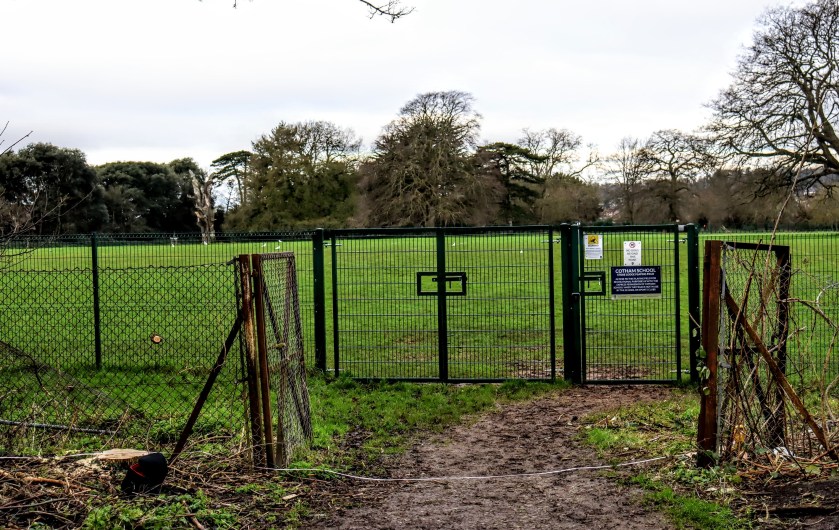
Cotham School has issued these FAQs – 33 to 38 in response to this issue.
The fate of other educational sites
In the meantime, we have no idea if or how other schools are managing the trees on their sites, or if the Council is consulted when they do.
Even though, in most cases, educational sites are still on Council-owned land, the Council only needs to be told if the trees have a TPO or are growing in one of the city’s 33 conservation zones (or, we assume, if the Council’s lease with the school keeps the management of the trees in the control of the Council – as was the case at Stoke Lodge).
Given that Bristol City Council does not normally issue TPOs for trees on its own land, arguing that it is a good landlord and will look after important trees appropriately, it is unlikely that trees that have been handed over on other educational sites will have been protected by a TPO. Perhaps the council should now review its policy where it no longer manages trees growing on educational sites in light of this history.
Certainly it seems that new tree planting need no longer involve the Council. For example we recently observed that several newly planted trees at Cotham School’s main site had died. It was only when we noted that the dead trees were missing from the Council’s tree stock data for the school that we learned that they were no longer responsible for the trees on the site. We have now been told by the school that the trees were planted as part of a recent development and that the failure of these dead trees will be ‘rectified’ soon. Meanwhile, it seems that these new trees are no longer selected, managed or mapped as part of the Council’s wider tree stock strategies and that the existing trees on the site are no longer the Council’s concern.
Presumably, similar arrangements are happening across the city with other educational sites being left to make their own, ad hoc arrangements to plant trees or not. Given that the One City Plan aims to double tree canopy cover over the next 25 years, it seems a great shame that this important land bank of possible new planting sites might have been excluded from helping to achieve Bristol’s plans.
We are also concerned that school governors (quite apart from lacking the necessary skills to manage the trees growing on their sites) may not yet have realised the full implications of the practical and strategic obligations that taking on such an important part of Bristol’s tree stock places upon them. As a result, they are likely to have to buy in (at our expense) ad hoc expertise, thereby possibly overlooking the wider strategic considerations that are needed when it comes to managing trees across the city.
This, coupled with the distinct possibility that well-meaning but unqualified Council officers may be making critical decisions about the welfare of trees on educational sites, makes for a very worrying situation.
*Here is a contrary view about using Glyphosate around and on trees – Tree pits: plants vs glyphosate


Shocked by this BTF. I’m wondering if you plan to challenge BCC on their refusal? They give 2 reasons why an FOI can be refused – they don’t have the info, or it would take more than 18 hours to obtain. Do you think the ‘significant burden’ excuse could be challenged by asking them to explain exactly what that means?
Would it be possible for all your questions to be submitted separately, by different individuals?
Can concerned individuals help in any way?
LikeLike
We are looking at the options…perhaps one school at a time…?
LikeLike